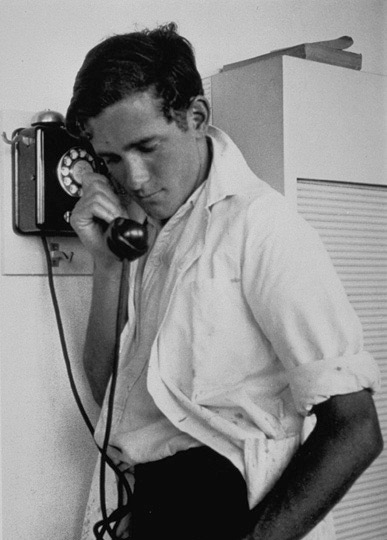Get In Touch With Us
Please use this form to contact us if you have any questions about the work and life of Werner Bischof. You will receive a prompt reply from us.
Marco Bischof, Werner Bischof Estate

The photographer Werner Bischof set up his studio toward the end of the thirties in a suburb of Zurich, and it was like an ivory tower.
After 1939, Switzerland had become an island in fascist Europe. Bischof devoted himself to his work as a studio photographer and portraitist. The fact that Switzerland was like an island presented itself to him as an opportunity: Bischof perfected his photographic technique and trained himself to be a master of seeing. Patience, care, precision — and, as their result, a highly poetic language of images.
“It was pure chance that the camera and not the paintbrush became my companion. Since childhood I had liked painting. However, the commercial arts course at the School of Applied Arts was full, so I decided to try photography. The endless possibilities of the new medium, the camera, fascinated me. Rambling for days on end in the woods put people utterly out of my mind. The animals, the plants, the wonder of growth, that was my world.”
These experiences, the world of things, the innocent beauty of nature, recur in his poetic writings during respites from his tour of duty.
What a contrast between the rough world of active service and the seclusion of his studio!
“More than 800 days in the army. How can this same oppressive state of things – war – still prevail, accompanied by all manner of horrors and destroying everything beautiful? How are we young people supposed to bear all this misfortune!?”
Werner Bischof’s new creativity did not escape the notice of his teacher Hans Finsler. In a short article in the magazine Graphis, he wrote admiringly of his pupil’s development:
“Werner Bischof is a young Swiss photographer, a pure photographer in the basic sense of the term: he writes with light. His media, his tones and form effects, his perspectives and structures, are photographic in a wide but literal sense. Even where text would seem almost unavoidable, he employs his technique to make the picture speak for itself.
Werner Bischof, thinks and works from the start in photographic terms. He uses the graphic elements of photography to suit his ends, which are the crystaIIization and interpretation of the object. He finds new and untapped possibilities of photographic approach and technique unknown to the creative artist who sets out from the principles of draughtsmanship.
Yet he is no reporter. He has no interest in a photograph which seeks to give an unbiased reproduction of reality. He would find it difficult to select from his photographs even one or two in which his own convictions have no voice. Though he turns again and again to nature for his ideas, even his simple studies of nature have conscious form, and often it is nature itself which prompts the shaping impulse. Bischof’s endeavor is to isolate law and regularity from the apparent chaos of the accidental. Even when he projects abstract forms on to natural ones, such as the surface of an onion or a female body, the result serves to emphasize and clarify the basic forms employed.”
(by his professor Hans Finsler)
The Swiss cultural monthly magazine Du was founded in 1941 in Zürich and remains one of the most significant cultural publications. Arnold Kübler, the first editor-in-chief, exerted a critical influence on Bischof’s development: for one, he provided him with the venue to publish his photos, and he was also a major factor in Bischof’s move from still-life photographer to photojournalist.
Arnold Kübler about Werner Bischof – “Werner Bischof joined us in the early 1940s, during the war, after studying photography at the School of Applied Arts in Zurich. Given the situation at the time and the original aims of our magazine, his job was to take or find all sorts of fashion pictures.
But we were also the first to publish his early, very personal compositions, giving them the prominence our full-page reproductions are famous for. These are photographs in which his particular concern with form was focused on little things, on lending them ornamental properties; for his sense of beauty feasted on the inconspicuous.
In many a discussion we requested or suggested more pictures of people. But he had to overcome a certain reserve.
There, where man shows his real self, where what is concealed is revealed, where beautiful or ugly truths comes out of hiding, there he found it hard to place the camera between himself and that view of human nature, to dissociate himself, as it were, from what was going on. Then, suddenly, they were there: the pictures of people.”
Werner Bischof Estate
Am Wasser 55
CH-8049 Zurich
Switzerland
info@wernerbischof.com
Please use this form to contact us if you have any questions about the work and life of Werner Bischof. You will receive a prompt reply from us.
Marco Bischof, Werner Bischof Estate
We will get back to you shortly.
Marco Bischof, Werner Bischof Estate